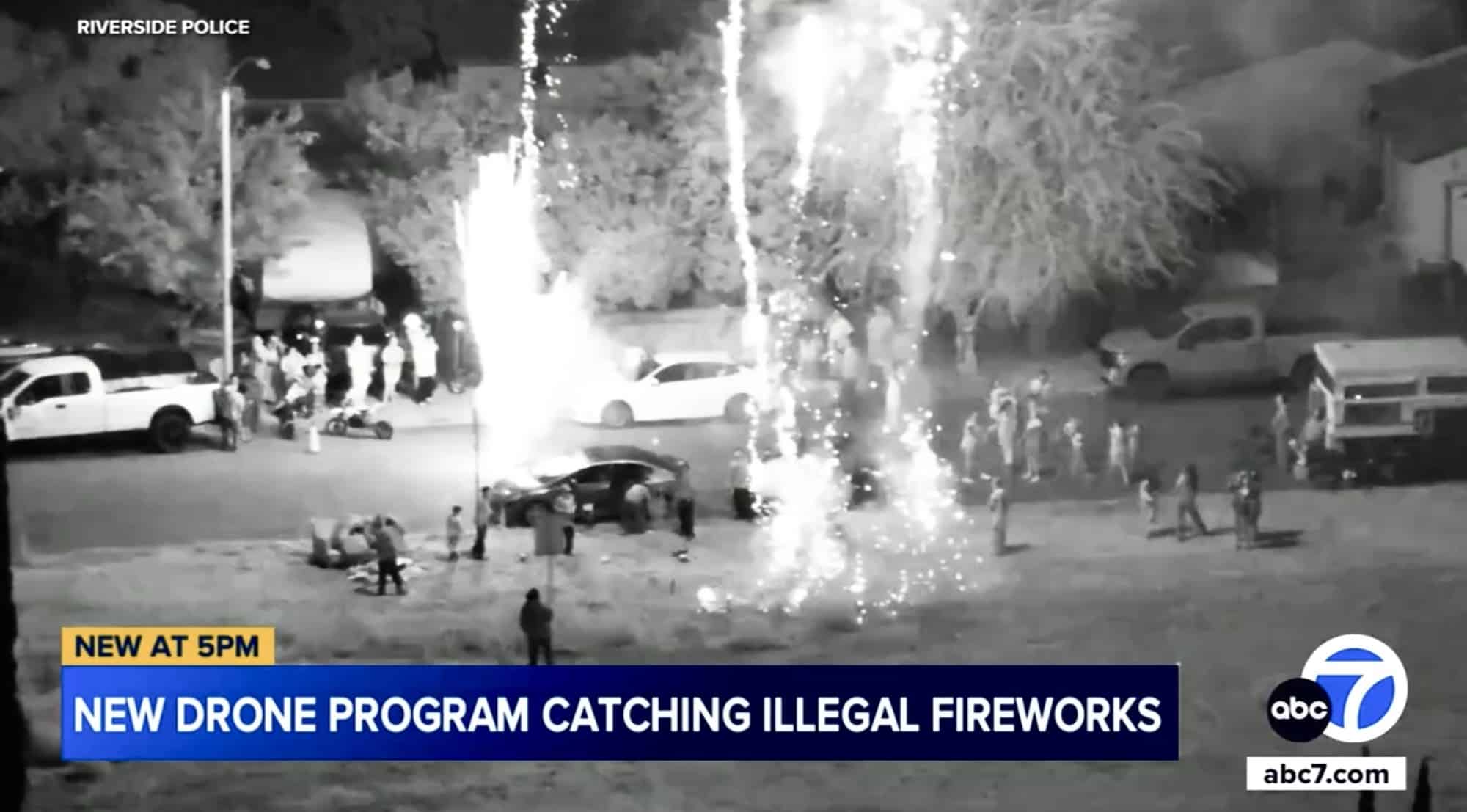How Riverside Police Drones Doubled Illegal Fireworks Citations on July 4th
When picturing July 4th in Riverside, California, images of backyard barbecues, vibrant fireworks, and family gatherings come to mind. However, for city officials and first responders, this celebration also brings a darker aspect with illegal fireworks posing risks of fires, injuries, and disruption. In 2025, Riverside embraced technology for public safety by deploying advanced police drones equipped with night vision, powerful cameras, and precise GPS to identify and cite violators from above. This resulted in doubling the citations from the previous year, providing historic video evidence, and significantly impacting community enforcement and discussions.
Why Did Riverside Police Turn to Drones?
Fireworks, particularly large illegal mortars trafficked from other states, are a recurring issue for Riverside officials. In 2024, the Hawarden Fire, ignited by illegal fireworks, burned over 500 acres, destroyed homes, and shook the community. Smaller incidents can cause serious injuries, affect veterans with PTSD, and disturb pets.
Despite strict penalties, enforcing fireworks bans proved challenging. Traditional patrols had limitations, said Police Chief Larry Gonzalez, emphasizing that drones provided efficient surveillance, enhancing safety and monitoring capacity during the Fourth of July.
The Technology: Eyes in the Sky
Riverside invested $86,000 in cutting-edge drone technology and operator training, using five drones with features like night vision and infrared to detect activity in the dark or through smoke. They came with zoom lenses capable of up to 200x magnification, live video streaming, mapping software, and rapid deployment capabilities allowing immediate response to fireworks sightings.
Detective Cole Tuggle highlighted the drones’ ability to record clear footage from distances, mark activity sites accurately, and gather video evidence for future reference.
How the Drone Patrols Worked
- Complaints & Reports: On receiving a fireworks complaint, a drone was quickly dispatched, arriving faster than ground patrols could navigate through traffic or crowds.
- Real-Time Detection: Drones identified heat bursts, flashes, and smoke to locate and record firework activity.
- Marking & Mapping: Operators used mapping tools to tag specific addresses, even in large or chaotic settings.
- Evidence Collection: Precise video footage was collected and stored as evidence.
- Citation by Mail: Instead of in-person confrontations, violations were handled through administrative citations mailed to property owners, with each carrying a $1,500 fine.
The Legal Shift: Holding Property Owners Responsible
Riverside’s ordinance was revised to allow citing property owners for fireworks used on their premises. This “social host” approach holds property owners responsible, and is enforceable even without catching the offender in the act. Citations can be repeated every 24 hours for ongoing violations, streamlining penalties without physical confrontations.
Officer Ryan Railsback reinforced the role of video evidence, facilitating aerial perspectives that aren’t feasible by traditional means.
Results: Doubled Citations, Fewer Fires
The 2025 operation was groundbreaking, with over 60 citations issued, more than doubling the previous year’s numbers. With fines totaling $97,500 for 65 violations, and only two minor fires reported, the strategy marked a significant improvement in public safety. Furthermore, drone surveillance discouraged additional illegal activities as residents realized the city’s aerial vigilance.
Real-Life Stories, Voices, and Controversy
While some residents criticized the measure, perceiving it as an invasion of privacy or unfair to property owners in densely populated areas, city officials defended the approach as essential for preventing disasters and enforcing public safety laws.
Comparisons to established practices, like using helicopters, were made to justify air surveillance tactics.
The Human Side of Enforcement
The local enforcement team, comprising tech enthusiasts and even former gamers, demonstrated dedication to community safety. Innovative outreach encouraged attendance at professional fireworks shows, underscoring safe celebration alternatives.
Expert Tips and Takeaways for Other Cities
- Invest in comprehensive drone capabilities for enhanced real-time safety monitoring.
- Pair strict enforcement with public education on safe celebration practices.
- Modernize ordinances to support new enforcement strategies like the “social host” law.
- Ensure thorough documentation to support legal processes and appeals.
- Coordinate across agencies for integrated safety efforts.
Cultural Pulse: Drones, Memes, and July 4th
Social media buzzed with memes and jokes about Riverside’s drone police, reflecting both humorous and serious public engagement. Enthusiasts recognized drones as an upgrade from traditional choppers, pondering future possibilities.
Final Thoughts: Building Trust, Saving Lives
Riverside’s 2025 drone initiatives highlight the evolving role of technology in safeguarding communities. As urban growth and wildfire risks surge, this model serves as a blueprint for balancing safety and freedom, urging safe celebrations while remaining vigilant.
For those tempted by illegal fireworks, remember: the skies are closely monitored. For others, let’s keep Independence Day a safe celebration for all.













